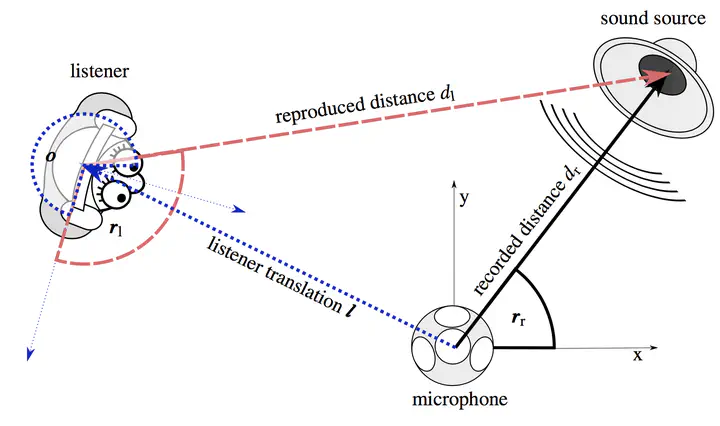Six-Degrees-of-Freedom Binaural Audio Reproduction of First-Order Ambisonics with Distance Information

Abstract
First-order Ambisonics (FOA) recordings can be processed and reproduced over headphones. They can be rotated to account for the listener’s head orientation. However, virtual reality (VR) systems allow the listener to move in six-degrees-of-freedom (6DoF), i.e., three rotational plus three transitional degrees of freedom. Here, the apparent angles and distances of the sound sources depend on the listener’s position. We propose a technique to facilitate 6DoF. In particular, a FOA recording is described using a parametric model, which is modified based on the listener’s position and information about the distances to the sources. We evaluate our method by a listening test, comparing different binaural renderings of a synthetic sound scene in which the listener can move freely.